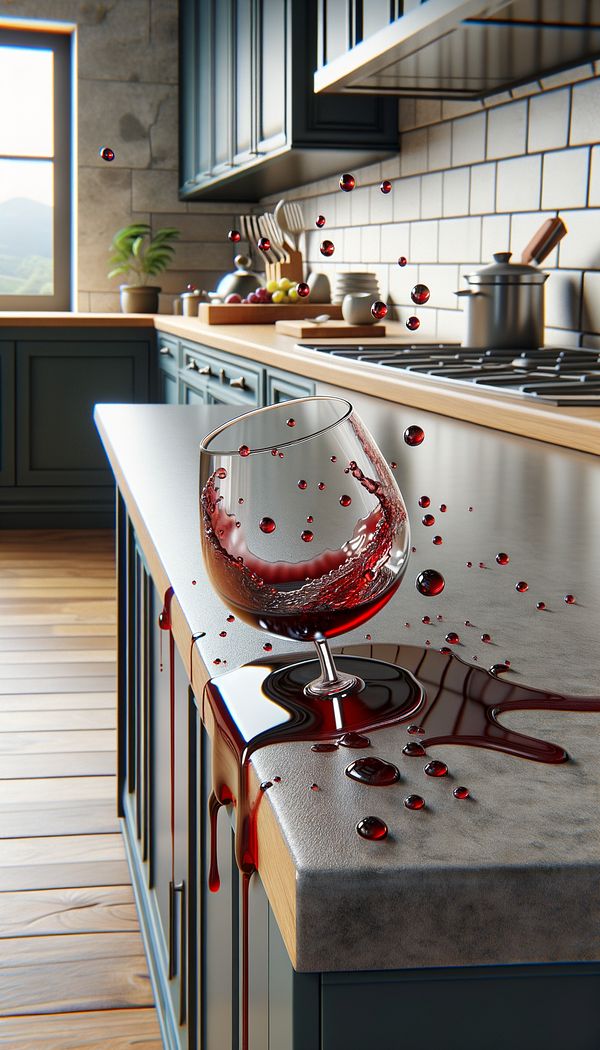What is Stain Resistant?
Stain resistant refers to materials or surfaces that are treated or inherently able to repel stains.
Description
In the world of interior design, having stain-resistant surfaces can be a game-changer, especially in spaces that see a lot of use or are prone to accidents, like kitchens and dining areas. Stain resistance means that a material or surface has been treated or is naturally able to repel stains, making it easier to clean and maintain its appearance over time. This can apply to a variety of interior design elements, including fabrics, carpets, countertops, and wall treatments and finishes.
Materials that are stain resistant have undergone special treatments or are made from inherently stain-repellent fibers or materials. These special treatments can include chemical applications that repel liquids, dirt, and other substances, creating a barrier that prevents these potentially staining agents from penetrating the material's surface.
Some common stain-resistant materials include certain types of synthetics for fabrics and carpets, sealed stone or engineered stone for countertops, and washable paint for walls. These materials and treatments help maintain the aesthetics of a space while reducing the need for intensive cleaning or the risk of permanent damage.
Usage
In a practical sense, choosing stain-resistant materials for a busy family's living room can save a lot of time and effort on upkeep. For example, a stain-resistant sofa made from treated fabric can handle spilled drinks or food a lot better than a traditional fabric sofa. In kitchen settings, a stain-resistant countertop is crucial for dealing with spills from ingredients like wine or oil, making cleanup a breeze.
Commercial spaces, such as restaurants and offices, also benefit greatly from stain-resistant materials, as they help maintain a clean, inviting appearance with less frequent or intensive cleaning required.
FAQs
-
How do stain-resistant materials work?
Stain-resistant materials work by either being made of inherently resistant fibers or by undergoing treatments that apply a protective barrier. This barrier repels liquids, dirt, and other staining agents, preventing them from penetrating the surface and causing a stain.
-
Can stain resistance wear off over time?
Yes, in certain materials, the stain-resistant treatments can wear off over time, especially with heavy use or improper cleaning methods. Regular maintenance and following the manufacturer's care instructions can help prolong the efficacy of stain resistance.
-
Are all stain-resistant materials waterproof?
Not necessarily. While stain resistance often provides some level of liquid repellency, it does not always equate to being waterproof. Waterproof materials are designed to completely prevent water penetration, whereas stain-resistant materials mainly repel substances that could cause stains.
Practical Application
When selecting materials for areas prone to spills or wear, consider the stain resistance of the material. This choice can significantly influence the longevity and maintenance needs of your interior design elements. For optimal benefits, always follow the manufacturer's care instructions and consider reapplying protective treatments as necessary to maintain stain resistance.
-
Kitchen & Bath37 articles
-
Materials & Textiles360 articles
-
Textiles & Upholstery252 articles
-
Flooring & Carpets48 articles
-
Wall Treatments & Finishes157 articles
-
NRC - Noise Reduction CoefficientNRC is a standard measure to indicate how much sound an acoustic material can absorb.
-
FrescoFresco is a technique of mural painting executed upon freshly laid wet plaster.
-
Modern StyleModern style in interior design refers to a design movement that emphasizes simplicity and function, incorporating sleek lines and a minimalist aesthetic.
-
StretcherA stretcher is a horizontal support element in furniture.
-
Harvest TableA harvest table is a large, typically rectangular table known for its simple and sturdy design.
